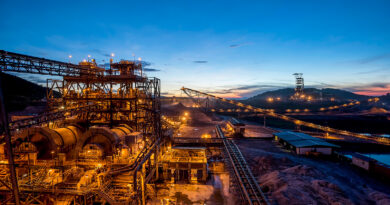Supply-chain disruptions, high energy costs slow down global growth
The IMF has cut its global growth forecasts and raised inflation forecasts, never a good combination. Supply-chain disruptions and rapidly rising energy costs are providing upside risks to inflation and downside risks to growth. Energy is currently at the centre of the perfect storm.
The IMF does not believe that the current price of energy will have a significant negative impact on the economy, but it will cause further volatility. China’s electricity consumption is at peak levels due to global demand for goods as Covid restricts services spend.
China banned Australian coal imports following a diplomatic fall out, even as flooding and air pollution targets have reduced China’s coal production. China has stepped up its purchases of natural gas from Russia, who in turn has taken advantage of Europe’s natural gas shortage (due to lower wind-driven electricity and a cold snap in autumn that has seen increased demand for heating) to negotiate the approval of Nord Stream 2, so most of the supply/demand imbalance is short term.
The pipeline has gained more prominence as Europe faces a gassupply crunch that sent prices to record levels last month. The peak in coal and natural gas prices could reflect the future for oil. Certainly, there is some upside to oil, but coal and natural gas will most likely come down after the pre-winter panic buying.
Even if oil rises to $100 a barrel, some rebalancing and rotations will be required, but the global economy will survive. The most likely outcome of the current energy crisis is increased production at higher energy prices, which would stabilise the global economy and energy infrastructure but also temporarily slow down the energy transition.
For example, China has instructed 170 coal mines to expand capacity, the US rig count has risen from low levels and solar polysilicon prices have reached their highest level in a decade on the back of Chinese factory shutdowns. Oil supply remains well managed, and US shale is likely to come online and meet demand as it grows.
China’s economy expanded 4.9% in the third quarter, down from 7.9% in the previous quarter, as energy crisis impacted demand.
In addition, work-from-home (WFH) is a new reality, as are electric and hydrogen vehicles. The world is also less energy intensive than it used to be. Natural gas, oil and coal consumption only represent 2% of GDP in the EU – the lowest level since 1999. Similarly, the US generates three times more output for every joule of energy consumed than it did in 1970.
While the current energy price surge is painful for many, the effective tax on the overall economy remains manageable, particularly as central banks are likely to look through energy price spikes. Inflation remains key to the global outlook.




